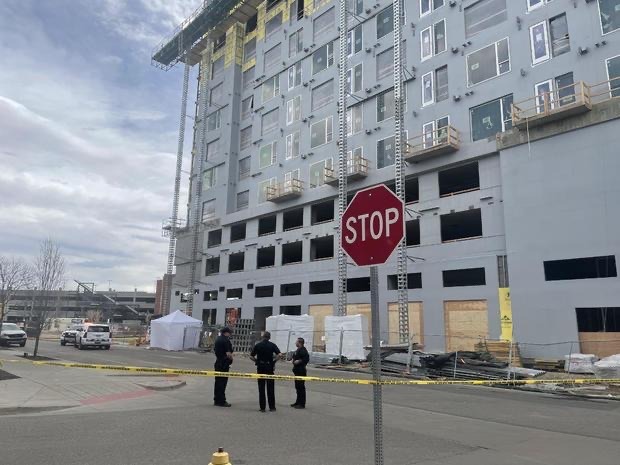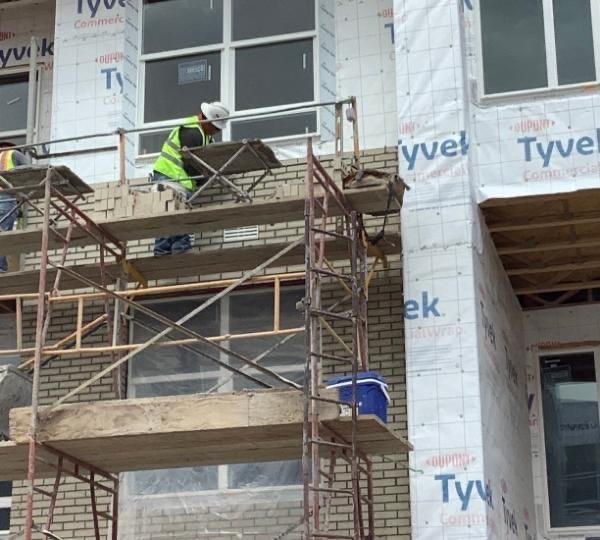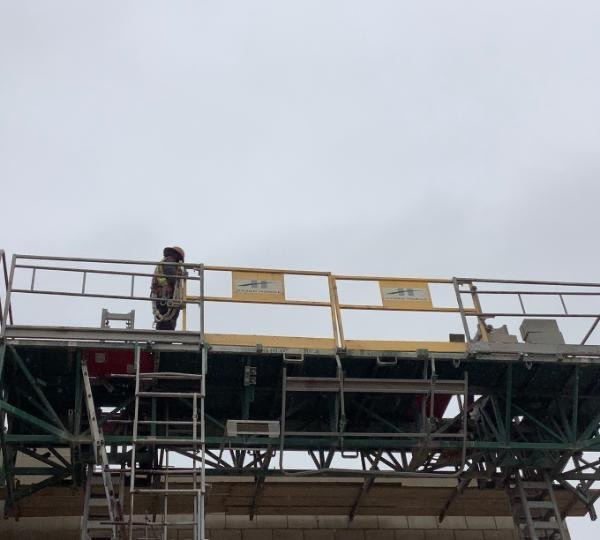Fall Protection and OSHA Requirements
Words: Michael RosserFatalities caused by falls from heights continue to be the leading cause of death for employees, accounting for 844 of the 5,486 fatalities recorded in 2022. Those fatalities were preventable. We’ve known for many years that falls were the number one killer in construction, but no matter how much training we conduct and how much fall protection equipment we buy, it’s still at the top of the list. Things must change!
What OSHA Says
OSHA standard 1926.451 regulates the use of scaffolding on the worksite. 1926.451(g)(1) specifically addresses fall protection requirements for scaffolds:
Fall protection or fall arrest systems—Each employee more than 10 feet above a lower level shall be protected from falls by guardrails or a fall arrest system, except those on single-point and two-point adjustable suspension scaffolds. Each employee on a single-point and two-point adjustable suspended scaffold shall be protected by both a personal fall arrest system and a guardrail.
Do we ever perform work on other surfaces instead of scaffolding? Of course, we do. Here’s the OSHA requirement for general fall protection in construction:
1926.501(b)(1)
Unprotected sides and edges. Each employee on a walking/working surface (horizontal and vertical surface) with an unprotected side or edge that is 6 feet (1.8 m) or more above a lower level shall be protected from falling by the use of guardrail systems, safety net systems, or personal fall arrest systems.
Always know and understand OSHA’s safety standards and regulations before beginning work at heights.

What About Training?
OSHA is very clear on what employees must be trained on when it comes to scaffolding and general fall protection.
1926.454(a) Scaffolds
The employer shall have each employee who performs work while on a scaffold trained by a person qualified in the subject matter to recognize the hazards associated with the type of scaffold being used and to understand the procedures to control or minimize those hazards.
1926.503(a)(1) General
The employer shall provide a training program for each employee who might be exposed to fall hazards. The program shall enable each employee to recognize the hazards of falling and shall train each employee in the procedures to be followed in order to minimize these hazards.
Here in Denver alone, we had two fatalities in 2023 due to employees falling from scaffolding. One fell 60 feet and the other fell 11 stories. Again, both were preventable.
OSHA Penalties
In all of my years in safety I have never seen a fall injury or fatality where OSHA did not issue citations following their investigation. Merriam-Webster Dictionary defines an accident as an unforeseen and unplanned event or circumstances or an unfortunate event resulting especially from carelessness or ignorance. Many people at OSHA say these fall cases are not accidents because they are preventable.
Currently, an OSHA Serious citation carries a fine of $16,131. In an investigation, OSHA looks for all possible causes of injury or fatality, whether it be a primary or secondary cause. How does this equate to citations? Here are examples I normally see during these investigations:
- Lack of employee training = $16,131
- No competent person on site or competent person not qualified = $16,131
- No daily inspection of the scaffold = $16,131
- Scaffold fall protection missing = $16,131
As you can see, citations add up to the point where no profit is being made from the project you’re working on.

OSHA also has two special types of citations that it can issue. The first is a Willful citation. I’ve only seen these issued in fatality investigations. What is willful? OSHA says:
A willful violation is defined as a violation in which the employer either knowingly failed to comply with a legal requirement (purposeful disregard) or acted with plain indifference to employee safety.
Basically, you knew what the OSHA requirements were but decided not to follow them. That multiplies the normal penalty amount by 10, so the citation would be $161,310.
The other special type is a Repeat citation. This means that you’ve been cited for the exact same thing on a job anywhere in the country within the last five years. Just like a Willful citation, the fine amount is multiplied by 10 for a $161,310 penalty.
Are you always going to receive the maximum fine amount for a violation? That depends. OSHA has a formula that takes into account your company size, good faith, and several other factors, including your OSHA history. What happens when you have an OSHA history?

Your Company Reputation
OSHA always checks an employer’s history with them before making decisions on penalty amounts, classification of citations, etc. Having been cited by OSHA in the past is a good indication to them that maybe you’re not taking safety as seriously as you should and maybe assessing the full penalty amount will get your attention.
Every employer’s OSHA history is available on the OSHA website for you and everyone else to see. I know that all our general contractor clients review a subcontractor’s OSHA history during the bid process. I also know that most are leery of accepting bids from companies that have had a job-related fatality.
The Human Consequences
I’ve talked about fall protection requirements as well as OSHA citations and penalties. But what are the consequences to a family when a serious injury or fatality occurs? If the employee is injured, they’re in the hospital or at home drawing workers’ compensation. It might be difficult to provide for a family under those circumstances.
A fatality, however, can destroy a family. In one of last year’s scaffold fatalities here in Denver, one of the deceased employee’s coworkers called his wife immediately after it happened and told her that her husband had been killed on the job. When I arrived, she and three children were physically being kept a block away from the job site by the police. For over two hours his coworkers, the police, OSHA, and I listened to his family screaming and crying, wanting to see their husband and father.
If you think that safety is all about being OSHA-compliant and not getting any OSHA citations, you’re wrong.
If you have questions or comments, please email me at mike@corporatesafetyservices.com.